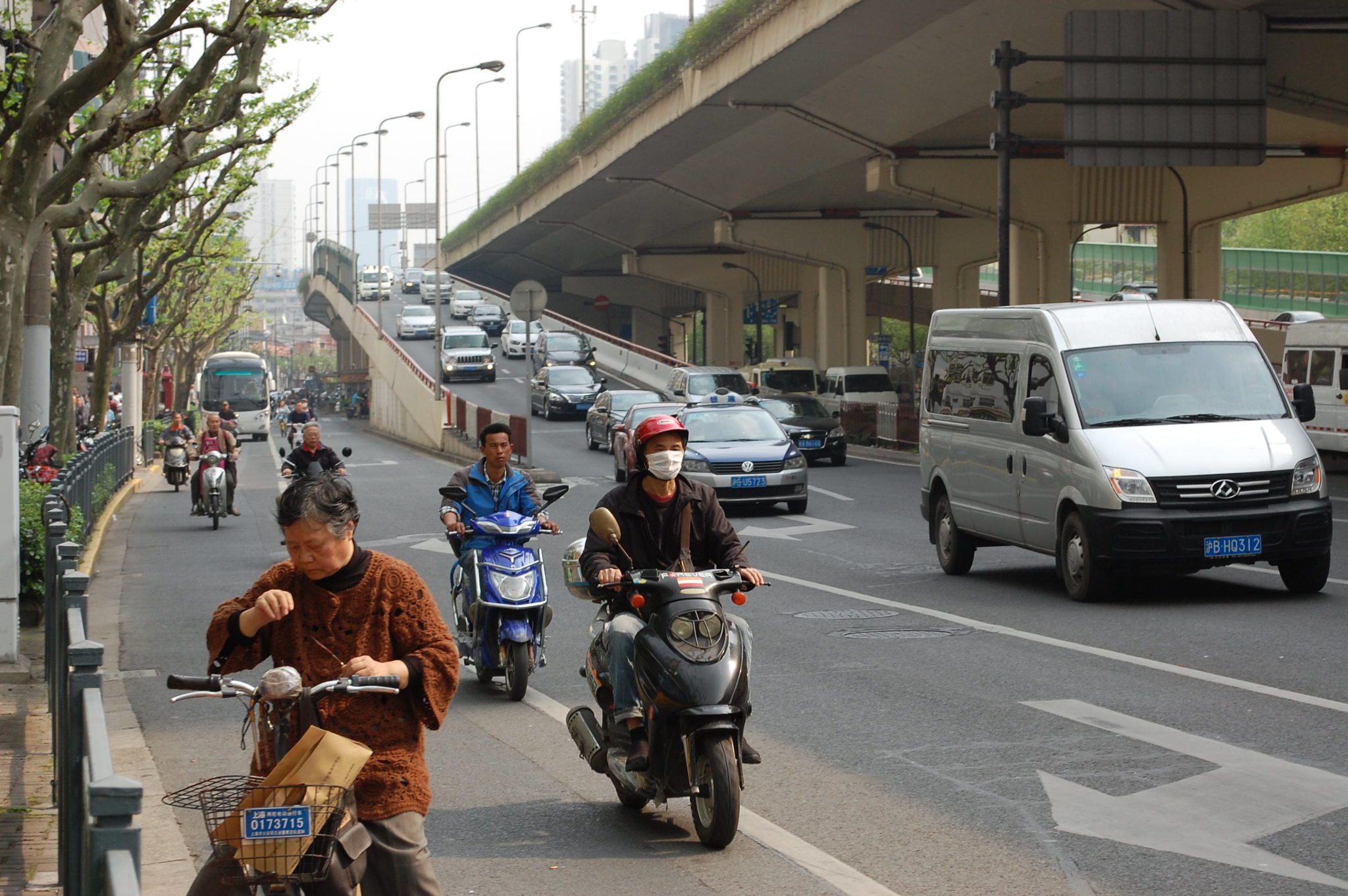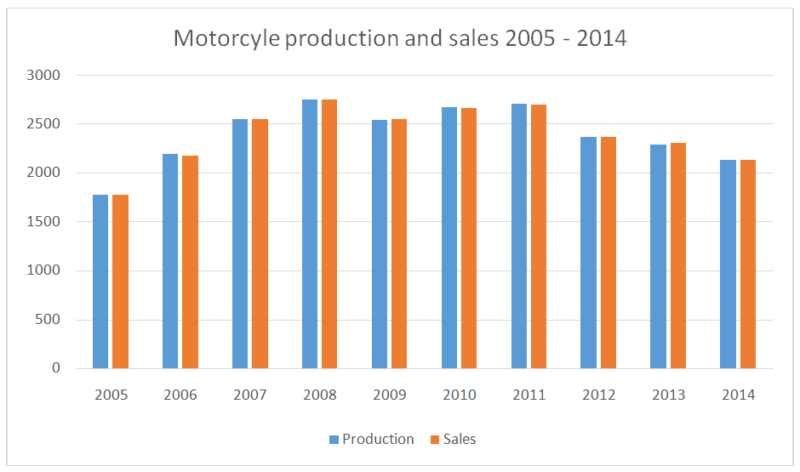Motorcycles in China: Commute or Entertainment?
Motorcycles have long been a favorite for personal transportation in China, passenger vehicles and cargo transportation in rural China, but they’re now facing unprecedented challenges in China. The motorcycle market in China doesn’t have a long history but that hasn’t prevented China from being the world’s largest producer of motorcycle for twenty consecutive years, growing from an annual production of 300 thousand units to over 200 million, accounting for about half of the world’s total motorcycle production.
In 1951, China started a trial production of motorcycles named Jinggangshan by the government.The launch of Jinggangshan motorcycles in China marked the new era for China’s motorcycle industry. In the eighties, the motorcycle market in China grew fast, from 49,000 units to 970,000. Nowadays, the motorcycle industry has become a pillar industry of China’s national economy and an important part of the automotive industry.
Tough time for road motorcycles
In 2014, China’s domestic motorcycle sales were 12,710,600 unit, down by 8.48%. Cross cycling and bending beam vehicles fell heavily, mainly due to the contraction of the rural market as the living standards of rural people in China are improving. More and more people in rural areas are switching to using scooters as a means of transport. Domestic sales of motorized tricycles, another common rural means of transport, also fell by 8.52% due to the growing popularity of microcars. On the other hand, the domestic market for scooters has steadily risen as both city and rural residents turn to it as a means of transport.
In the next few years, the market for motorcycles in China will be facing dual pressures of changing policy regarding vehicles (Xian Mo) and market adjustment.Previously the market competition was mainly about quantity expansion and price competition. Now the market is gradually shifting to quality and differentiation competition.
Faced with these changing conditions, how does the consumer feel about the motorcycle as a continued form of transport? Is it still a useful vehicle for commuting and personal transportation, or is it already shifting to a purely recreational vehicle?
Why it’s still a good idea to commute by motorcycle
- Convenience
Compared to other modes of transportation, it’s faster to maneuver through traffic and can save on travel time since motorcycles occupy less space without causing road congestion. What’s more, the parking space required for motorcycle can be very small, making it easier to park on China’s crowded streets.
- Relieve the congestion
The biggest advantage of motorcycles in China is its compact body, which will effectively relieve urban congestion. Li Bin, the Secretary of China Automobile Association Motorcycle presented a test result when he was explaining the importance of motorcycle; to finish the same journey, a motorcycle is the fastest, followed by bus, with a personal car being the slowest. From this test result, we can see the superiority in terms of the speed compared to other means of transportation, which will play a significant improvement in urban traffic congestion.
- Energy saving
A motorcycle’s fuel consumption is much lower than cars. Take Zongshen ZS100-S for instance, the average fuel consumption for one hundred kilometers is only 1.9L, much lower than many hybrid electric vehicles. Besides, the total amount of pollutants motorcycles discharge is not as high as well.
Entertainment is the trend, and also the way out
Although the historically huge trend of personal motorcycle ownership is dying down, large displacement motorcycles designed for leisure and entertainment are growing steadily. In 2014, large displacement motorcycles (displacement of more than 400 ml) domestic sales hit 14,600, an increase of 231.82%.
With the development of the motorcycle leisure and entertainment industry, Chinese people are seeking more a personalized lifestyle and trending towards larger displacement, stronger performance, stylish design, high-tech motorcycles as a leisure and entertainment tool. The demand for large displacement motorcycle will increase year by year. Meanwhile, domestic as well as international companies will be paying more attention to the big bike market by investing in large displacement motorcycle research and development. Companies will be launching more models to capitalize on this growing popularity. The market for motorcycles in China seems to be heading for a distribution that will be 20% of high-end motorcycles and 80% of low-end ones.
From the perspective of the consumer, the current demand for large displacement motorcycles is mainly from motorcycle fans. The consumer price for this group is about 20 to 30thousand RMB and Japanese and European second-hand motorcycles are their primary choice before the emergence of domestic large displacement motorcycles. Industry insiders estimate that in China this segment of the consumer population is roughly 20 million people and the annual consumer market value is more than 1 billion yuan.
The Bike competition in China
With the increasing presence of bike rental in China and the development of mobile applications based on the sharing economy, motorbikes are now having a new competition in Tier-1 and Tier-2 cities, where those bikes are present at every corner. Faced with this new competition, motorbike brands have chosen to focus on new technologies, which appeal to the Chinese consumers: electric motorbikes, which do not pollute and require no effort from the user. This new challenge pushes foreign companies to follow and improve their own electric models.

Bikes for rent in Shanghai street, all brands use different colors.
Daxue Consulting Expertise
Daxue Consulting can provide you support in understanding the motorbike market in China. We conduct all the market research and consulting services you may need, such as potential analysis, cost analysis, implementation feasibility etc. To know more about the motorbikes in China, do not hesitate to contact our dedicated project managers by email at dx@daxueconsulting.com.
You can follow us on Twitter and Linkedin to learn more about China:
How innovations in #China will change the world: From Artificial Intelligence to #mpayment https://t.co/Ne76zybkJF pic.twitter.com/ZlvQq7fz7q
— Daxue Consulting (@DaxueConsulting) August 18, 2017
















